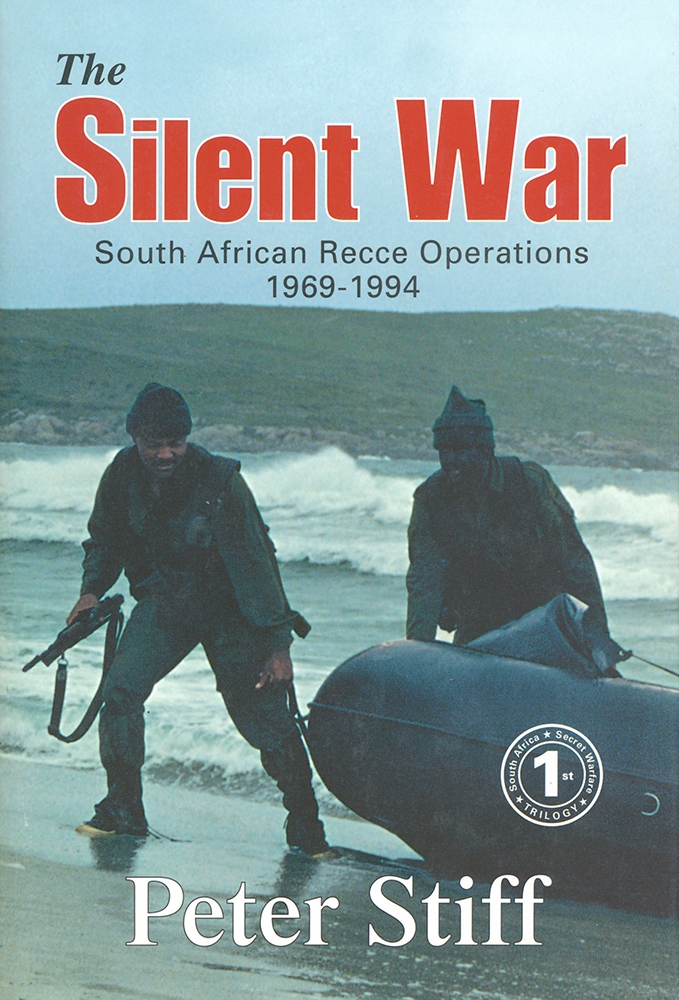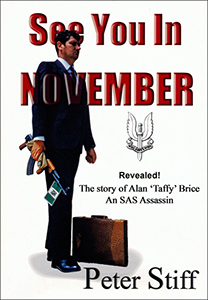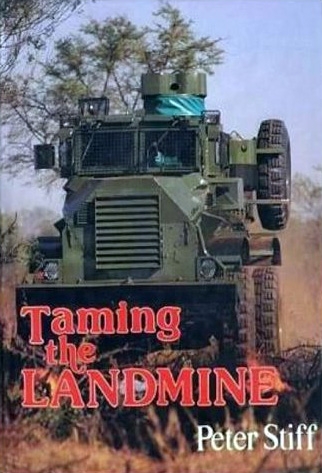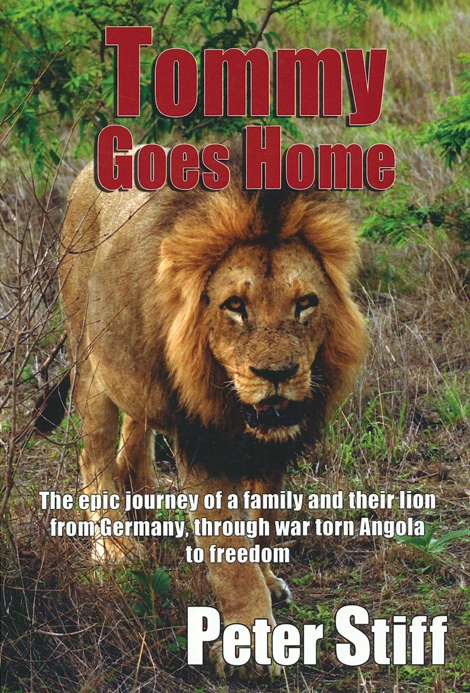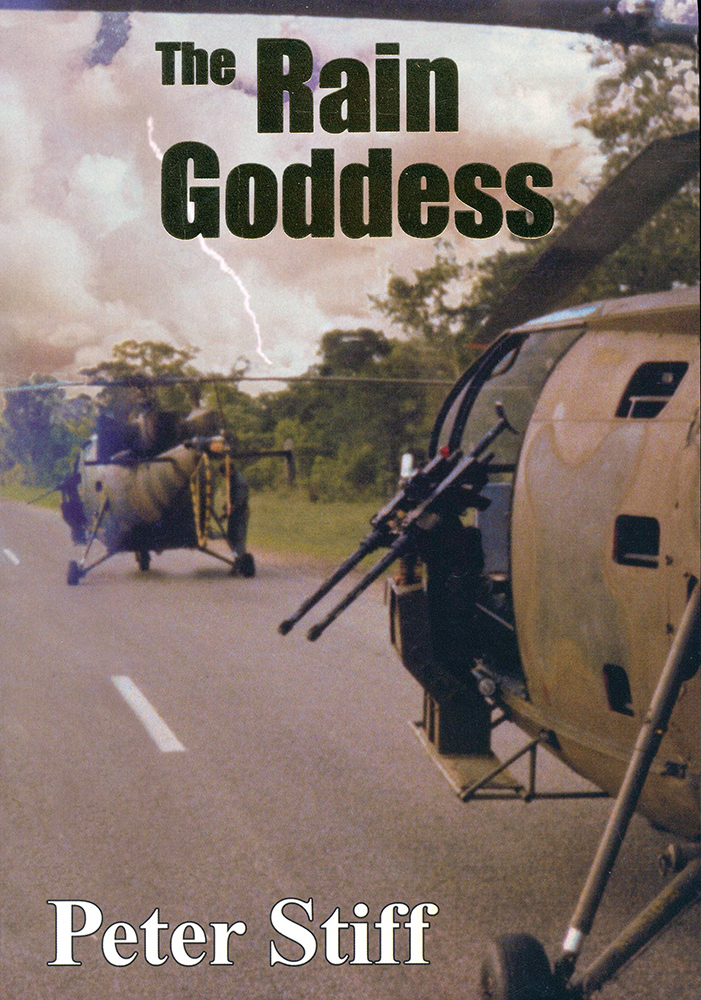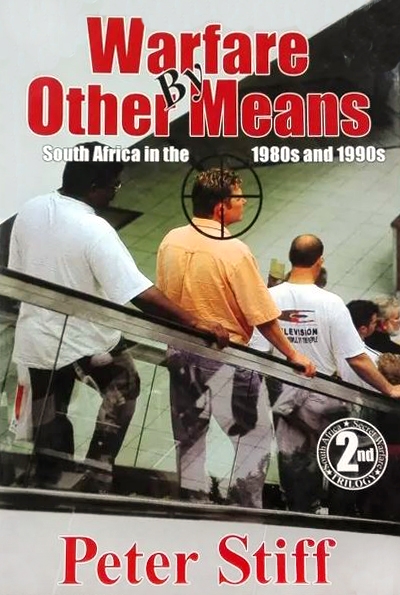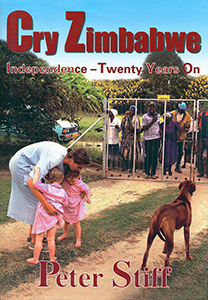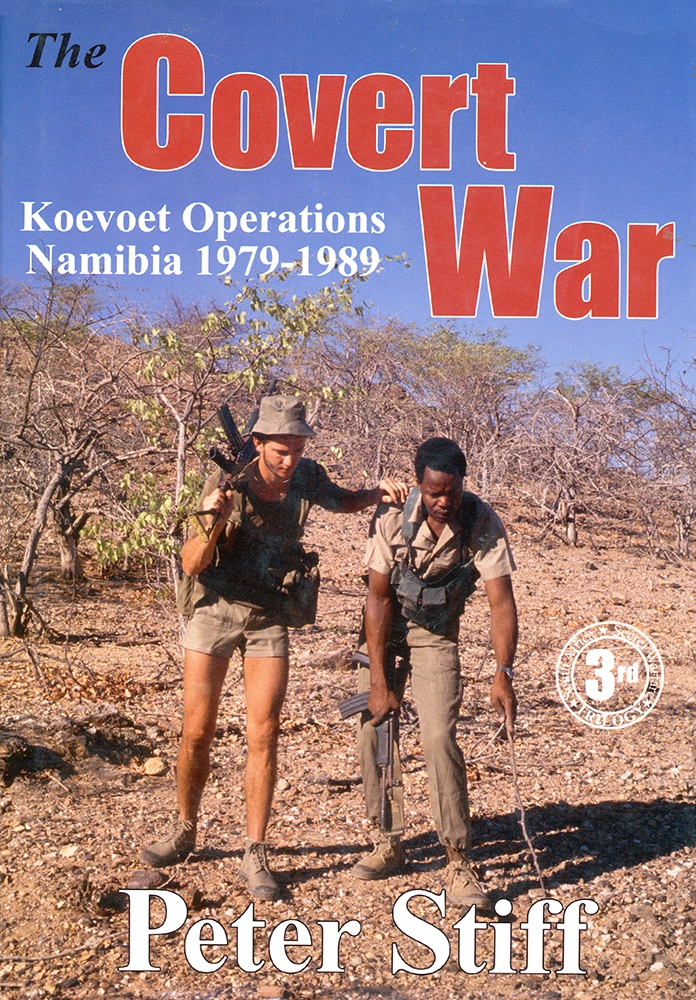The Silent War. South African Recce operations 1969 to 1994, by Peter Stiff
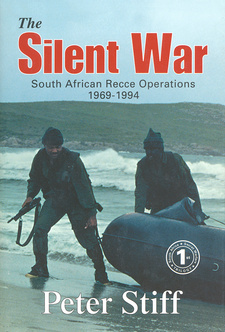
The Silent War. South African Recce operations 1969 to 1994, by Peter Stiff. Publisher: Galago. 1st edition. Cape Town, South Africa 1999. ISBN 0620243007 / ISBN 0-62-024300-7 / ISBN 9780620243001 / ISBN 978-0-62-024300-1
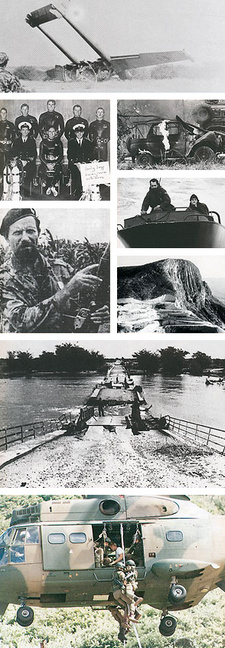
A choice of photos from The Silent War. South African Recce operations 1969 to 1994, by Peter Stiff. The book cover shows a group from 4-Reconnaissance Regiment practise beach landings from a Zodiac on South Africa's west coast.
The Silent War. South African Recce operations 1969 to 1994, by Peter Stiff, tells the story of South Africa’s special forces the history of South Africa itself during the apartheid years.
How it began
South Africa, as the 1960s edged towards the 1970s, was on the face of things a peaceful country and few whites, if anyone at all, believed the country would have to face an external military threat in the not too distant future. Certainly there had been incidents of insurrection and civil unrest in South Africa's black townships - the most serious occurring after PAC - Pan Africanist Congress inspired unrest over the pass laws resulted in the shootings at Sharpeville on 21 March 1960. The SAP, however, quickly brought the situation under control. This resulted in both the ANC - African National Congress and the PAC being banned by the government on 8 April 1960. There was a serious resurgence on 16 December 1961 - Dingaan's Day (later Day of the Vow, now Day of Reconciliation), a day considered Holy by Afrikaners when the Voortrekkers' victory over the Zulus at Blood (Ncome) River in 1838 is celebrated. It signalled a widespread and coordinated outbreak of sabotage in Johannesburg, Durban, Port Elizabeth and elsewhere. Government buildings, African administration offices, post offices and other 'instruments of white power' were damaged by explosives. It was the work of MK - Umkhonto we Sizwe (Spear of the Nation) the newly formed military wing of the ANC, orchestrated by its alliance partner the underground SACP -South African Communist Party. They advised MK's High Command and trained its cadres. The SACP's Harold Strachan and ANC kingpin, Govan Mbeki, were arrested and charged for acts of sabotage in Port Elizabeth. The less fortunate Strachan was imprisoned, but Mbeki was acquitted. September 1961 saw the birth of POQO - the armed wing of the PAC, which under the leadership of Robert Sobukwe had splintered from the ANC in 1958. In the words of Azania Combat (the official organ of APLA - Azanian People's Liberation Army) POQO was x well known for its unique type of operations, which were characterised by direct assaults on the physical beings of the enemy forces as opposed to targeting inanimate objects.' This was certainly true. In 1992 the police uncovered several plots to murder white farmers and their families, notably in the Stellenbosch area. Despite arrests and convictions the organisation continued to flourish committing sporadic acts of terrorism and murder, targeting white businessmen and black policemen in Langa Township, Cape Town. Through intimidation and politicisation of the people, POQO gained almost complete control over Mbekweni Township (now Paarl Township). During this process two coloured women were tortured and decapitated, a police patrol was attacked and several men seriously wounded and a store attacked and the white owner killed and his coloured assistant left for dead. In the early hours of 22 November 1962, after doctoring themselves with nat'wemuti to make them bullet proof, a POQO gang several hundred strong and armed with pangas and homemade weapons, emerged from Mbekweni Township and embarked on a mission to kill all the whites in Paarl. A young couple, Frans Richard and Rencia Vermeulen, were hacked to death and three other whites were injured. The mob surged through the town, assaulting, looting and burning while chanting: "This is POQO! Kill the whites! Drive them into the sea!" The town came alive as people awakened, grabbed guns and fought back. Five of the mob were shot dead and hundreds more wounded, some while being beaten off during an attack on the police station. The survivors limped back to Mbekweni. [...]
This is an excerpt from The Silent War. South African Recce operations 1969 to 1994, by Peter Stiff.
Titel: The Silent War
Subtitle: South African Recce operations 1969 to 1994
Author: Peter Stiff
Publisher: Galago
1st edition. Cape Town, South Africa 1999
ISBN 0620243007 / ISBN 0-62-024300-7
ISBN 9780620243001 / ISBN 978-0-62-024300-1
Original hardcover and dustjackte, 17 x 24 cm, 608 pages, many bw- and colour photos
Stiff, Peter im Namibiana-Buchangebot
The Silent War. South African Recce operations 1969 to 1994
The Silent War. South African Recce operations 1969 to 1994: South Africa’s special forces during the apartheid years.
See You In November. The Story of Alan ‘Taffy’ Brice: An SAS Assassin
See You In November ist the story of SAS member Alan ‘Taffy' Brice, who led a a secret assassination team in hostile Zambia during the Rhodesian Bush War years.
Taming the Landmine
Taming the Landmine is about the advances made in the design of mine protected vehicles in Rhodesia and South Africa from World War I to the 1980s.
Tommy Goes Home
Tommy Goes Home is the true story of a German family's amazing treck across Africa between hope and civil war.
The Rain Goddess
The Rain Goddess is an explosive novel based on facts and set in Rhodesia, now Zimbabwe, in the mid 1960s and early 1970s.
Warfare by Other Means: South Africa in the 1980s and 1990s
Warfare by Other Means describes the methods of warfare conducted by South Africa’s secret intelligence and covert warfare units in the 1980s and 1990s.
Cry Zimbabwe. Independence-Twenty Years On
Cry Zimbabwe is a most into topic story of the ongoing tragedy twenty years on after Zimbabwe acchieved independence.
The Covert War. Koevoet Operations in Namibia 1979-1989
The Covert War is the full and mostly untold story of the Koevoet operations in northern Namibia during 1979-1989.

